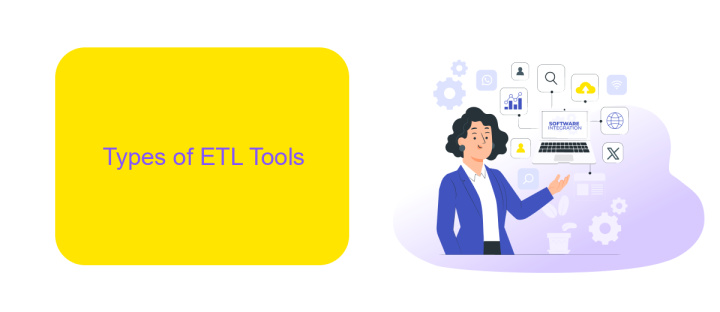ETL Tools Used in Data Warehousing
ETL (Extract, Transform, Load) tools play a crucial role in data warehousing by facilitating the seamless extraction of data from various sources, its transformation into a suitable format, and its loading into a data warehouse. These tools ensure data integrity, consistency, and accessibility, enabling businesses to derive valuable insights and make informed decisions. This article explores the most commonly used ETL tools in data warehousing.
Introduction
Data warehousing has become a cornerstone for businesses aiming to make data-driven decisions. ETL (Extract, Transform, Load) tools are essential in this process, enabling seamless data integration from various sources into a centralized repository. These tools not only automate data workflows but also ensure data accuracy and consistency, which are critical for analytics and reporting.
- Data Extraction: Collecting data from multiple sources.
- Data Transformation: Converting data into a suitable format.
- Data Loading: Importing the transformed data into a data warehouse.
With the growing complexity of data ecosystems, choosing the right ETL tool is crucial. Solutions like ApiX-Drive facilitate the integration process by offering a user-friendly platform for connecting various applications and services. This simplifies the ETL process, allowing businesses to focus more on analyzing data rather than managing it. As a result, companies can achieve more efficient and reliable data warehousing operations.
Types of ETL Tools

ETL tools can be broadly categorized into open-source, commercial, and cloud-based solutions. Open-source ETL tools like Apache NiFi and Talend provide flexibility and cost-effectiveness, making them ideal for startups and small to medium-sized enterprises. These tools often come with a strong community support but may require more technical expertise to set up and maintain. Commercial ETL tools such as Informatica PowerCenter and IBM DataStage offer robust features, extensive support, and scalability, making them suitable for large enterprises with complex data needs.
Cloud-based ETL tools are increasingly popular due to their scalability, ease of use, and integration capabilities. Tools like AWS Glue and Google Cloud Dataflow allow for seamless data processing in the cloud, eliminating the need for on-premises infrastructure. Additionally, services like ApiX-Drive facilitate the integration process by offering a user-friendly interface to connect various applications and automate workflows. These tools are particularly advantageous for businesses looking to leverage cloud technologies for efficient and scalable data management.
Benefits of Using ETL Tools

ETL tools play a crucial role in data warehousing by streamlining the process of extracting, transforming, and loading data from various sources into a centralized repository. These tools offer numerous benefits that enhance the efficiency and reliability of data management.
- Automation: ETL tools automate repetitive tasks, reducing manual intervention and the risk of human errors.
- Data Quality: They ensure high-quality data through validation and cleansing processes, which is essential for accurate analysis.
- Scalability: ETL tools can handle large volumes of data, making them suitable for growing businesses and extensive datasets.
- Integration: Services like ApiX-Drive facilitate seamless integration with various data sources, enhancing the flexibility and adaptability of ETL processes.
- Time Efficiency: By automating data workflows, ETL tools significantly reduce the time required to prepare data for analysis.
By leveraging ETL tools, organizations can ensure that their data warehousing processes are efficient, reliable, and scalable. This enables better decision-making, improved operational efficiency, and a competitive edge in the market. Moreover, with integration services like ApiX-Drive, the setup and maintenance of data pipelines become even more streamlined, allowing businesses to focus on deriving insights from their data.
Considerations for Choosing an ETL Tool

When selecting an ETL tool for data warehousing, it is crucial to consider several factors to ensure it meets your organization's needs. The right ETL tool can significantly streamline data integration processes, enhance data quality, and improve overall efficiency.
Firstly, evaluate the tool's compatibility with your existing systems and data sources. It should seamlessly integrate with your current infrastructure to avoid additional costs and complexities. Additionally, consider the scalability of the tool to accommodate future data growth and evolving business requirements.
- Data Transformation Capabilities: Ensure the tool offers robust transformation functions to handle complex data manipulations.
- Ease of Use: A user-friendly interface can reduce the learning curve and increase productivity.
- Cost: Analyze the total cost of ownership, including licensing, maintenance, and support fees.
- Support and Community: Reliable customer support and a strong user community can provide valuable assistance and resources.
- Integration with Third-Party Services: Tools like ApiX-Drive can simplify integrations with various applications and services, enhancing overall functionality.
Finally, perform a thorough evaluation and possibly a trial run of the ETL tool before making a final decision. This will help identify any potential issues and ensure it aligns with your data warehousing goals.
- Automate the work of an online store or landing
- Empower through integration
- Don't spend money on programmers and integrators
- Save time by automating routine tasks
Best Practices for Implementing ETL Tools
When implementing ETL tools in data warehousing, it is crucial to start with a clear understanding of your data requirements and objectives. Conduct a thorough analysis of the data sources, transformation logic, and the target data warehouse schema. This helps in selecting the right ETL tool that aligns with your specific needs. Additionally, ensure that the tool supports scalability and can handle the volume of data you anticipate. Proper documentation and version control of ETL processes are also essential to maintain consistency and facilitate troubleshooting.
Another best practice is to leverage integration services like ApiX-Drive to streamline the ETL process. ApiX-Drive enables seamless integration between various data sources and your ETL tool, reducing manual effort and minimizing errors. It supports a wide range of applications and can automate data transfer, making the ETL process more efficient. Regular monitoring and performance tuning of ETL jobs are also recommended to ensure optimal performance. Implementing robust error handling and logging mechanisms will help in quickly identifying and resolving issues, ensuring data integrity and reliability.
FAQ
What is ETL in the context of data warehousing?
Why is ETL important for data warehousing?
What are some common ETL tools used in data warehousing?
How can I automate ETL processes in my data warehouse?
What factors should I consider when choosing an ETL tool for my data warehouse?
Apix-Drive is a universal tool that will quickly streamline any workflow, freeing you from routine and possible financial losses. Try ApiX-Drive in action and see how useful it is for you personally. In the meantime, when you are setting up connections between systems, think about where you are investing your free time, because now you will have much more of it.


